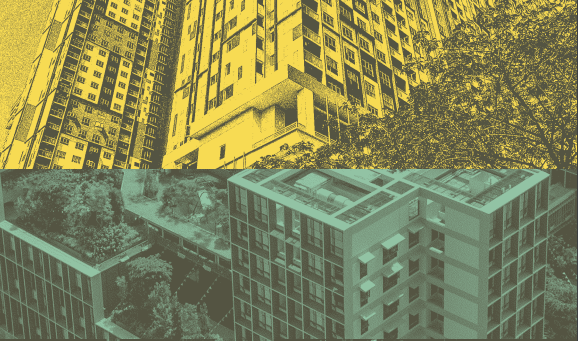
Five strategies to improve housing affordability
The report “Affordable housing: profiles of five metropolitan cities” was presented yesterday at the World Cities Summit’s Mayors Forum in Medellín
In an economy characterized by ever-increasing metropolisation, one of the biggest challenges for public authorities is to provide affordable housing for new arrivals and local populations alike. As purely market-based development will always tend to benefit those at the top of the social ladder and displace those at the bottom (or worse, render them homeless), metropolitan governments must intervene to avoid potentially catastrophic social issues.
The recent report “Affordable Housing: Profiles of Five Metropolitan Cities,” commissioned by Metropolis, Singapore’s Centre for Liveable Cities and the City of Montréal, portrays five different metropolitan governments’ (Metropolis members Berlin, Buenos Aires, Kuala Lumpur and Montréal, as well as Singapore) approaches to deal with the issue, and was presented yesterday at the World Cities Summit’s Mayors Forum in Medellín.
Interestingly, the participating cities, despite vast cultural differences among them, all present strikingly similar problems, indicating that metropolisation and scarcity of housing constitute truly global phenomena. Ageing populations, gentrification and urban decay are present in all four corners of the world, though the way they manifest themselves of course varies depending on location, as do the solutions proposed.
All cities cite spiralling rental and housing purchase costs as one of the main problems they are faced with. Berlin, Kuala Lumpur and Montréal, in particular, are having to build massive amounts of social and affordable housing to tackle the problem. All propose interesting solutions, with the German capital perhaps being the boldest in imposing rent controls (for example by enforcing yearly limits on increases in rent), whereas the latter two have softer approaches towards the private sector. Kuala Lumpur, for example, interestingly proposes a ten-year moratorium on the resale of housing to prevent speculation, whereas Montréal offers zoning amendments and fiscal subsidies to private developers in exchange for investments in affordable and social housing. Montréal and Singapore also outline a new challenge: that of catering for rapidly ageing populations. The island city-state, in particular, is beginning to develop purpose-built housing for the elderly, with medical facilities on hand and increased accessibility.
Buenos Aires’s profile, on the other hand, differs in the sense that it focuses on a specific case: that of Barrio 31, a historic informal settlement located right next to some of the city’s most desirable districts. The city government's attempts to integrate the neighbourhood into the formal economy start from a push to improve the housing situation. The authorities are thus using a mixture of completely new construction and improvement of currently-existing structures to fight the exclusion and the decay that has always characterized the area, all the while involving residents in every project (both in terms of planning and in the construction itself).
